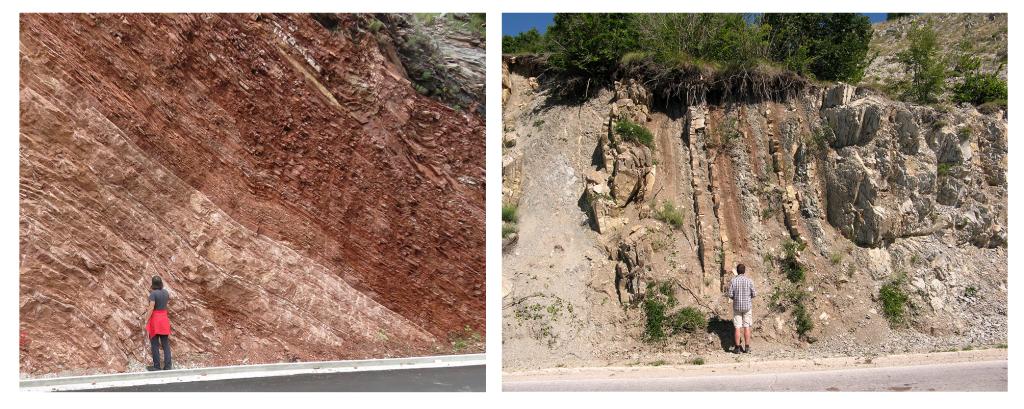Sedimentary evolution of Late Cretaceous deep-water basins in the Dinarides (SECret)
Principal Investigator at ZRC SAZU
Špela Goričan, PhD-
Original Title
Sedimentarna evolucija zgornjekrednih globokomorskih bazenov v Dinaridih (SECret)
-
Acronym
SECret
Project Team
Irena Debeljak, PhD, Prof. Aleksander Horvat, PhD, Nina Zupančič, PhD, Anja Kocjančič, Filip Litera, Špela Goričan, PhD-
Project ID
J1-50027
-
Duration
1 November 2023–31 October 2026 -
SICRIS
SICRIS -
Financial Source
Slovenian Research and Innovation Agency

The Cretaceous sedimentary record provides invaluable data for a better understanding of the Earth System in a “greenhouse state” and for constraining predictions of future climate change. In the past decades, Cretaceous deep-marine sediments have been intensely investigated worldwide, but remained largely unexplored in the Dinarides.
For this project we selected two separate Late Cretaceous basins with an excellently preserved stratigraphic record. The first is the Budva Basin, which had the most external location in the Dinaric orogen and was characterized by a continuous deep-marine sedimentation from the Middle Triassic to the Early Paleogene. The second is the next more internal Bosnian Basin, which evolved into a foreland basin around the Jurassic-Cretaceous boundary but remained in an under-filled stage until the Maastrichtian. In both basins pelagic sediments are interstratified with carbonate gravity-flow deposits from the intervening High Karst Carbonate Platform and, in the Bosnian Basin only, also with siliciclastics from the prograding orogen.
The project has been carried out in collaboration of two partner teams, one from Slovenia and the other one from Croatia, with complementary specific experience and interests. The primary aim of the project is to establish a solid stratigraphic framework to allow global correlations that will place the Dinaric basins on the map of reference sections for understanding Late Cretaceous climate and oceanographic evolution. In addition to biostratigraphy (foraminifera, radiolarians, calcareous nannofossils), geochemical (elemental and isotope) and mineralogical analyses will be applied. The research will focus on Cretaceous Oceanic Red Beds (CORBs), oceanic anoxic events (OAEs), transgressive-regressive (T-R) cycles, and provenance of siliciclastic grains in sandstones. The objectives of the proposed project are:
1) to determine the time span of CORBs and OAEs in the Budva Basin and to identify correlative deposits in the Bosnian Basin,
2) to investigate the early Late Cretaceous transition from holosiliceous to carbonate-dominated biogenic background sedimentation and to estimate the sedimentation rates in different background lithologies,
3) to determine T-R cycles in carbonate and siliciclastic turbidites and to correlate these cycles within a single basin, across both basins and at a regional scale of the orogen,
4) to determine the provenance of siliciclastic deposits in the Bosnian Basin, to reveal possible vertical changes in composition of sandstones and to relate these changes to the evolution of the Internal Dinarides.
The integrated results will be interpreted in terms of global environmental changes and will be correlated across the Dinarides-Hellenides to obtain a refined insight into the geodynamic history of the relatively quiet Late Cretaceous epoch between two orogenic phases – the Late Jurassic to Early Cretaceous ophiolite obduction and the latest Cretaceous to Paleogene continental collision.
Key words
Upper Cretaceous, Dinarides, stratigraphy, sedimentology, paleontology, geochemistry.

Upper Cretaceous red pelagic limestone of the Budva Basin (left) and contemporaneous mixed carbonate-siliciclastic deposits of the Bosnian Basin (right).